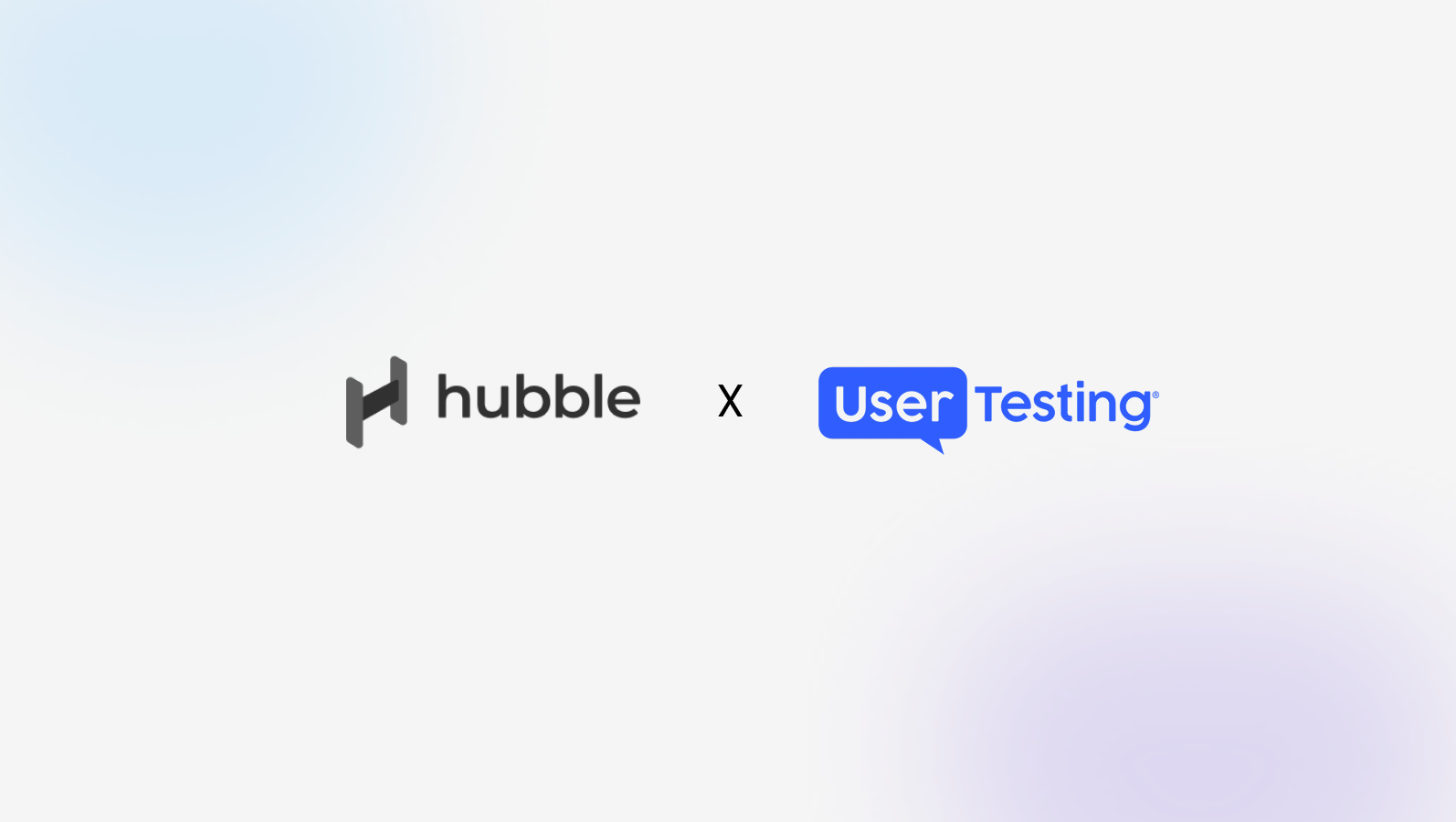UserTesting is a leading user research tool that helps collect video-based human insights from customers. Hubble is a UserTesting alternative that can help facilitate the collection of powerful user insights across the product development cycle. Both platforms offer a variety of features that can be used by designers, researchers and product managers. In this blog post, we will compare Hubble vs. UserTesting based on the following key criteria:
- Cost - what are their pricing plans and how do they differ?
- User experience & collaboration - how easy is the platform to utilize between different collaborators within an organization?
- Types of Supported Studies - what types of tests and insights can be collected?
- Participant pool quality - how good are the participants that can be recruited through each of the platforms?
- Factors to consider - What factors should buyers consider when evaluating Hubble vs. UserTesting?
Executive Summary
Here are some key differences between Hubble and UserTesting:
Study-wide recording: Hubble provides study-wide recording that captures a single, continuous video across multiple tasks. UserTesting records tasks individually, which can make analysis and synthesis more fragmented.
Participant pool depth: Hubble integrates directly with User Interviews and Respondent to give teams access to both consumer and professional audiences across a wide range of demographics. UserTesting relies on its own B2C-centric participant pool, which is less suited for niche or B2B recruiting needs.
AI Moderated Interviews: Hubble allows teams to embed AI-assisted probing within unmoderated studies, seamlessly blending qualitative depth with scale. UserTesting does not yet offer AI probing integrated into unmoderated tasks, relying instead on traditional moderated interviews for deeper insights.
Video analysis & tagging: Hubble includes automatic transcription, advanced tagging, and synthesis tools for unmoderated studies to accelerate insight generation. UserTesting provides raw recordings and transcripts, but lacks integrated tagging and synthesis workflows.
Hubble vs. UserTesting: A General Comparison
Ratings from G2
Pricing Plans
Before dividing into the feature comparison, here is a quick comparison of the pricing options offered by Hubble and UserTesting. Both platforms offer custom plans targeting mid-market and enterprise companies.
Feature Comparison
User Experience And Collaboration
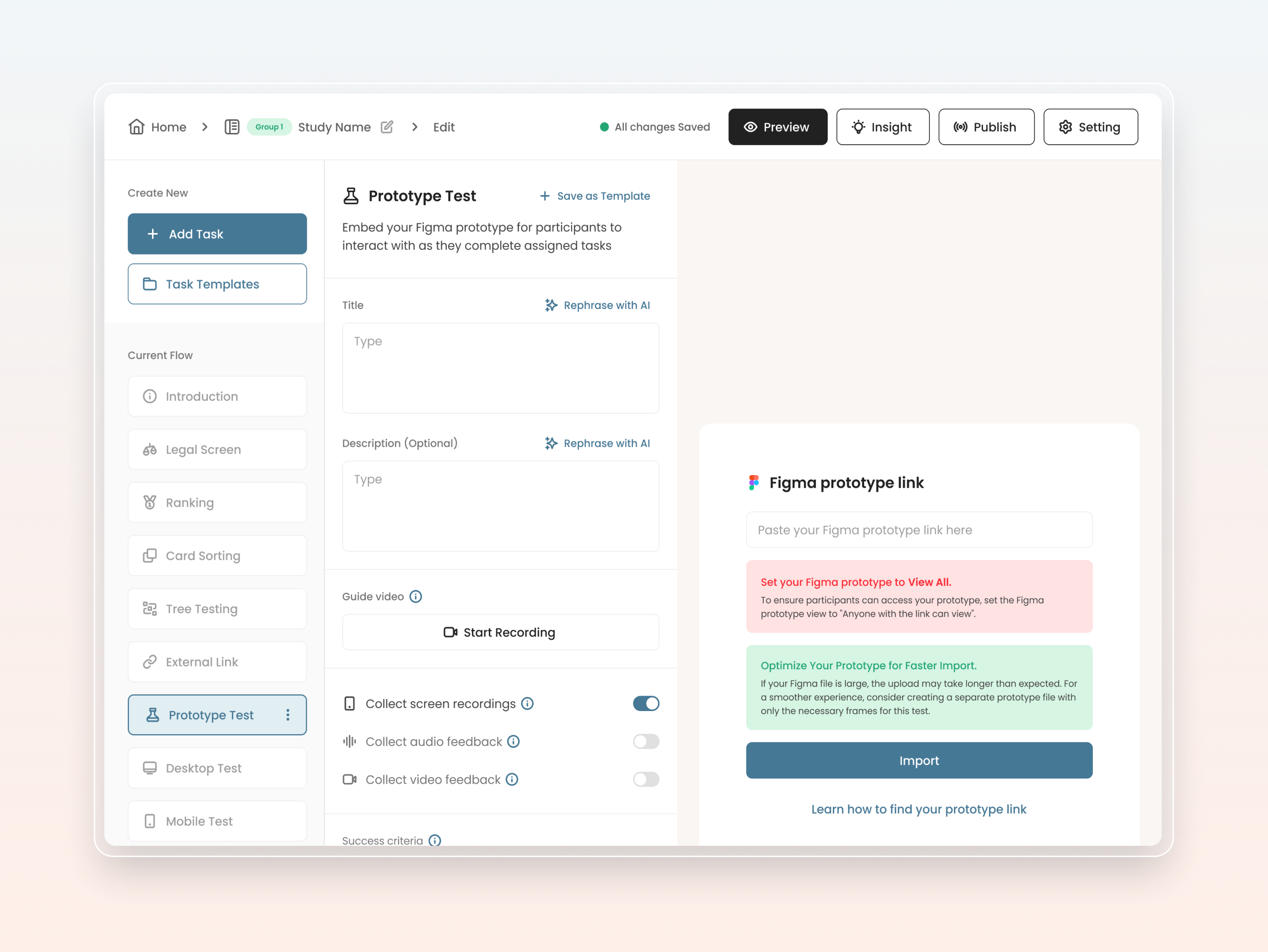
Study Builder and Navigation
Both Hubble and UserTesting are designed to support enterprise teams running usability tests and research studies, but the experience of creating and managing those studies is quite different. Hubble provides a modern, intuitive interface with a drag-and-drop builder that makes it easy to reorder tasks, add questions, and structure studies efficiently. It also offers a wide range of templates across different research use cases, helping teams launch projects quickly without needing to start from scratch.
UserTesting, by contrast, requires more setup time and navigation through multiple menus. While powerful, its interface can feel heavy and complex—especially for new users. Hubble’s streamlined workflow reduces friction, so teams can get studies into the field faster.
When it comes to importing prototypes, Hubble stands out. It reliably handles complex, interaction-heavy Figma prototypes with less prep work, while UserTesting often requires additional optimization and file adjustments to ensure smooth performance. For product teams working with sophisticated prototypes, this reliability is a major time-saver.
One of the clearest differences lies in navigation. Hubble organizes its research capabilities into three straightforward modules: in-product surveys, unmoderated studies, and participant recruitment. This modular system gives users direct access to their most important workflows—like launching a survey, writing screeners, or checking participant activity—without digging through multiple project layers. UserTesting, on the other hand, structures everything around “tests” that must be set up and launched individually, which can slow down access to insights.
Team Collaboration
Both Hubble and UserTesting support team collaboration, allowing researchers to build studies, collect responses, and share findings with stakeholders. Hubble makes this especially seamless with lightweight workspace collaboration tools and easy report-sharing features that let teams synthesize insights quickly.
"We switched from UserTesting to Hubble because it offers a much more streamlined user experience and collaboration workflow. We are also impressed with how fast the team ships new features."
- Eric Sagalyn
Head of UX @ Energysage (Schneider Electric)
Types of Supported Studies
Hubble and UserTesting support various types of research insights, including unmoderated tests and moderated tests. However, UserTesting does not support AI Moderated Interviews.
AI Moderated Interviews
Hubble offers AI Moderated Interviews as a core capability while UserTesting does not. Instead of requiring a live moderator, Hubble’s AI can guide participants through dynamic conversations, probing with relevant follow-up questions based on their responses. This allows teams to capture qualitative insights without being constrained by time zones or researcher availability. The AI follows customizable discussion guides, ensuring interviews stay structured while still adapting naturally to participant answers.
The result is a faster, more scalable way to gather interview data. Research teams can run dozens or even hundreds of interviews simultaneously, analyze recordings with built-in AI synthesis, and generate ready-to-share reports in hours rather than weeks. For teams looking to balance depth of insight with speed and efficiency, Hubble’s AI Moderated Interviews represent a major leap forward compared to the more manual workflows on UserTesting.
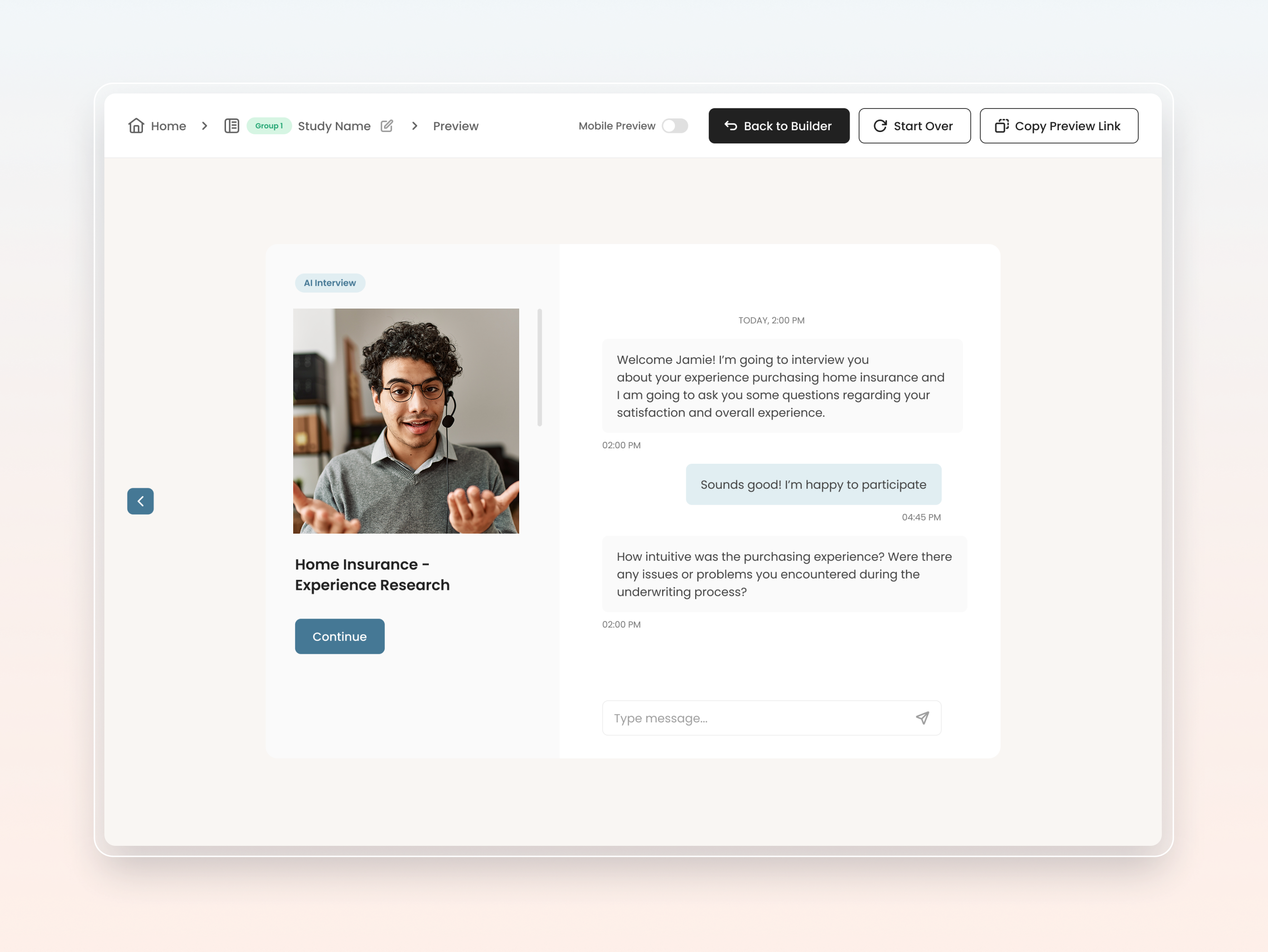
Both platforms offer unmoderated usability tests that can be used to collect quick and powerful research insights. Hubble is a comprehensive user research tool providing the flexibility to conduct research with both external participants and product users. Hubble includes usability tests, prototype tests and card sorting tests.
Using these tools, product managers, UX designers, and UX researchers can gather research insights throughout every phase of product development. Hubble offers valuable quantitative data, such as heat maps, click data, success paths, completion rates, and time spent on each task.
Usability Testing Templates
Hubble and UserTesting provide template libraries that can be used to collect insights for different types of projects across the product development cycle. Hubble offers a wider range of templates with graphical images to help you find the templates that you need more easily. Both platforms also provide the ability to create custom templates and save them for future use.
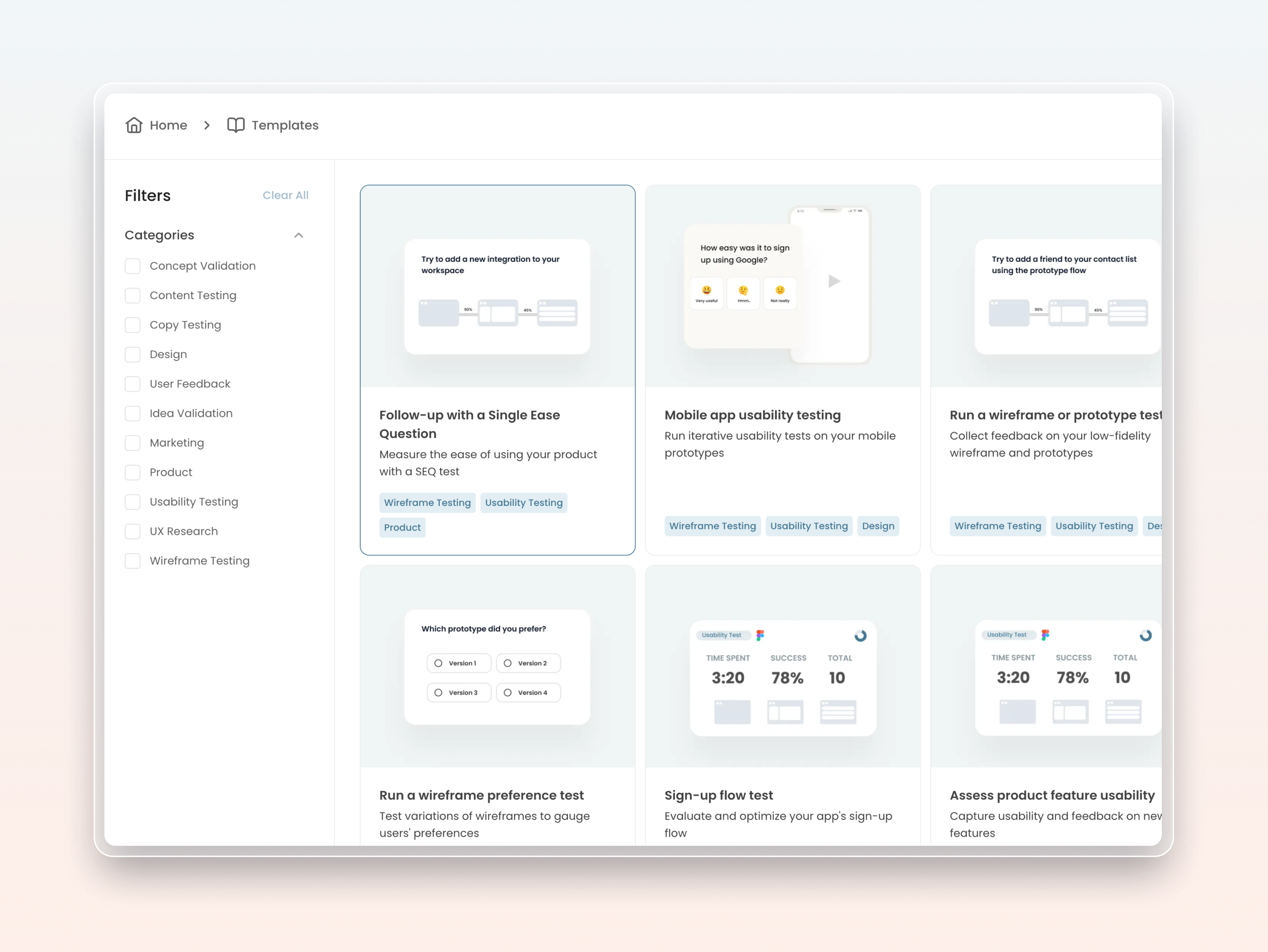
Figma Prototype Testing
One important distinction between UserTesting and Hubble is that Hubble offers a direct integration with Figma's API for usability testing so that you can generate click data, heat maps and more detailed usability analysis on prototype tests. Hubble offers an easier way of importing heavy prototypes that contain many interactions and frames. On the other hand, UserTesting offers more integrations with various types of design tools such as InVision, Sketch and AdobeXD, but its Figma integration does not support granular insights like Hubble's.

IA Tests and Card Sorting
Hubble and UserTesting both offer card sorting to support information architecture testing and gather categorization feedback. Where Hubble stands apart is in its flexibility: it supports open, closed, and hybrid card sorting, giving teams full control over the method that best fits their project. UserTesting, by contrast, limits teams to more basic setups—making Hubble the stronger choice for researchers who need more robust and customizable card sorting options.
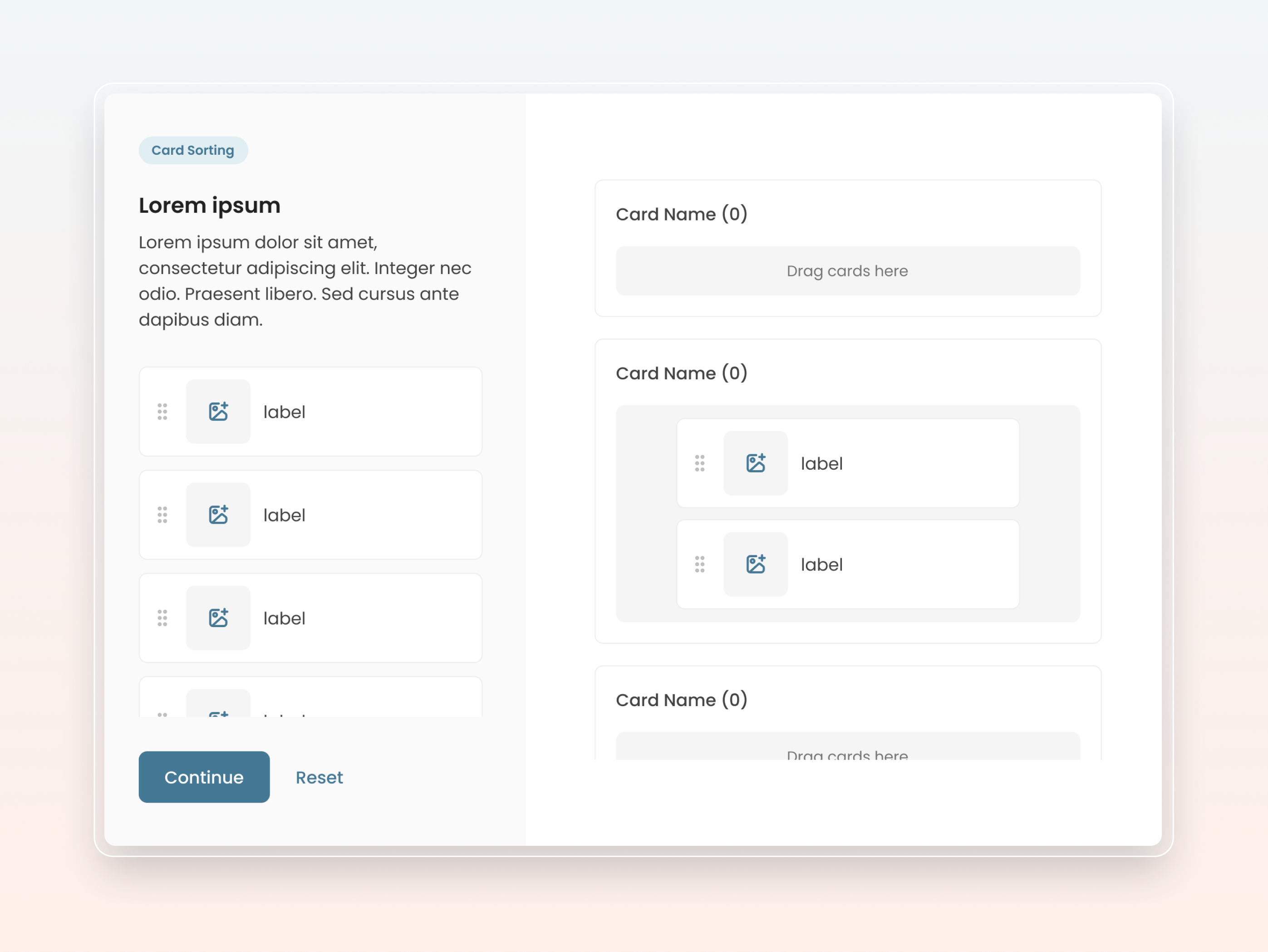
Live Website Testing
Hubble offers live website testing that does not require an SDK installation. UserTesting offers a way to test native mobile applications, which Hubble does not. Through the live site recording, Hubble users can record participants while they interact with a live site in production.
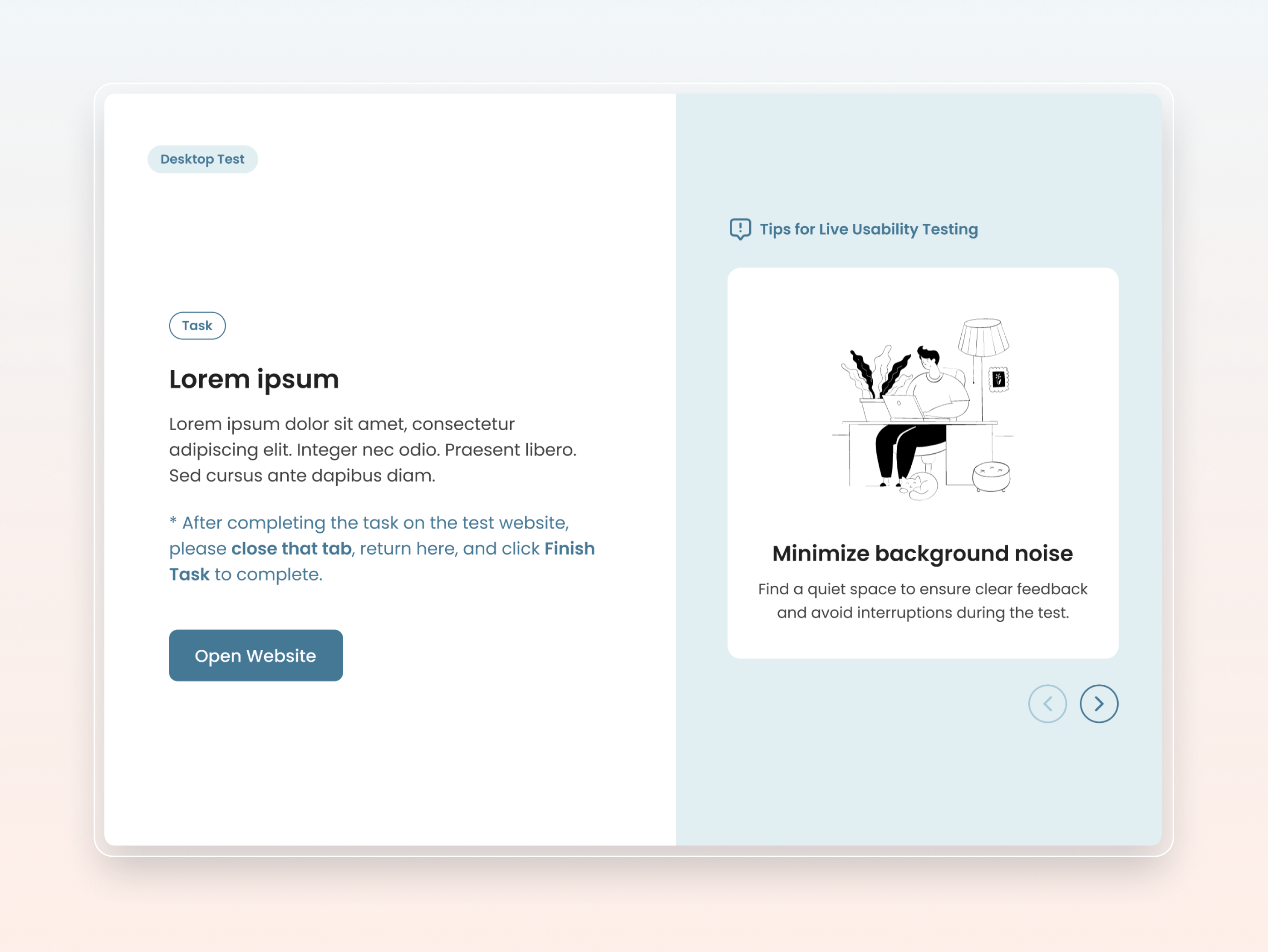
Moderated Interviews
Both Hubble and UserTesting provide tools for running moderated interviews, giving teams the ability to capture rich qualitative insights through live video sessions. Researchers can ask questions in real time, probe deeper into participant responses, and observe behaviors as they unfold. Each platform supports integrations with Zoom, Google Meet, and Microsoft Teams, making it simple to connect with both external participants and internal stakeholders.
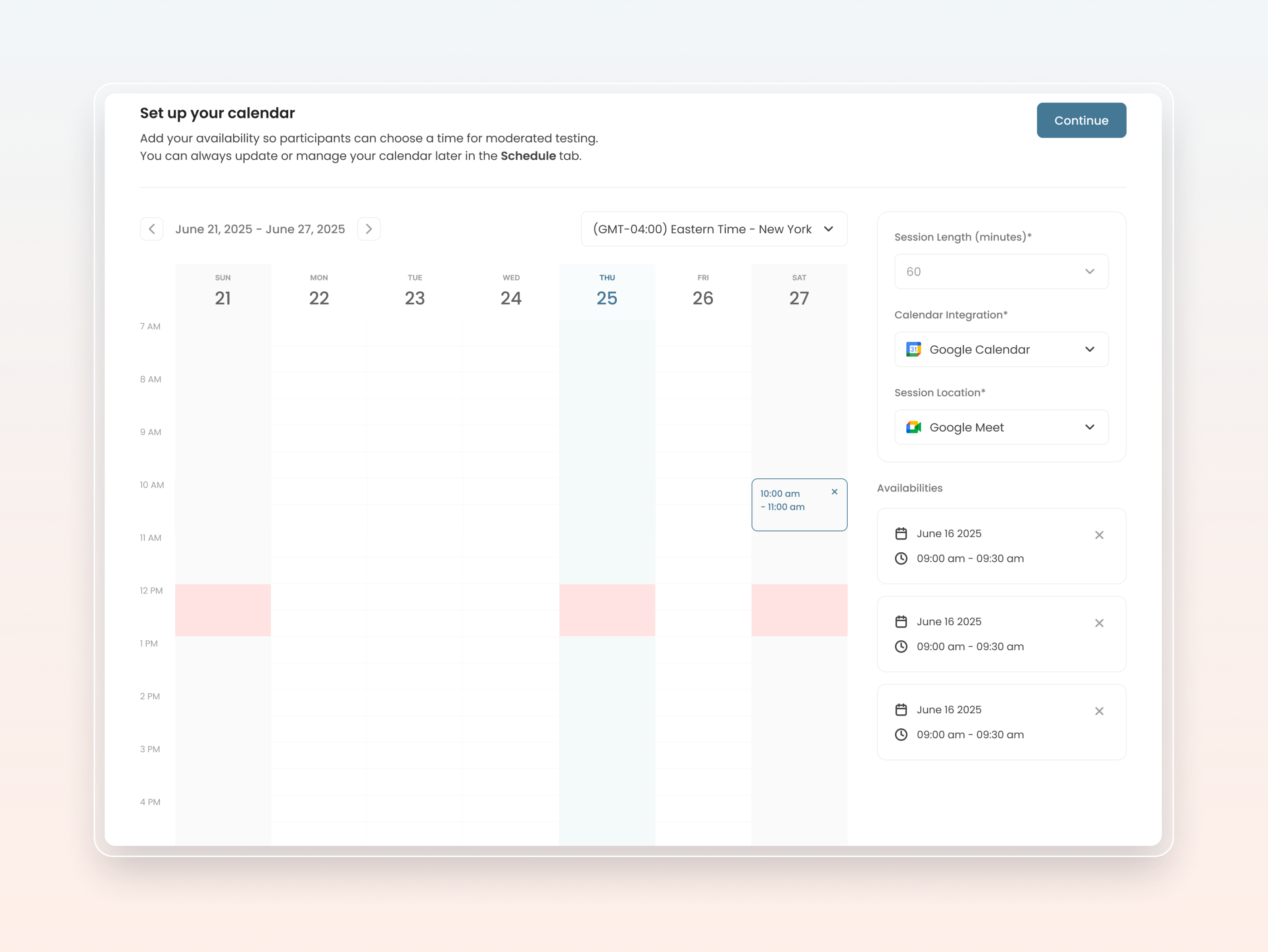
Mobile Native Testing (iOS + Android)
Hubble and UserTesting both provide native mobile apps that enable teams to capture research insights directly from participants using their smartphones. By supporting true in-app and mobile-native studies, both platforms allow researchers to understand how users interact with products in realistic, on-the-go contexts. Where Hubble stands out is in its streamlined participant experience: users can join studies and share screen, voice, and camera feedback without extra setup or SDK installations, making participation faster and reducing drop-off while still delivering high-quality, authentic insights.

Study Results & Synthesis
Hubble’s video analysis and tagging capabilities go beyond what Maze currently offers by providing automated, AI-powered synthesis that identifies key moments, tags critical insights, and surfaces themes across sessions—all without manual review. Researchers can quickly scan transcripts, highlight notable quotes, and generate summaries that are structured and actionable. Unlike Maze, which offers limited video functionality and lacks deep post-session analysis, Hubble is built to support end-to-end qualitative synthesis, making it especially valuable for teams running moderated interviews or unmoderated think-aloud sessions. This enables faster insight extraction and streamlines the entire research-to-insight workflow.
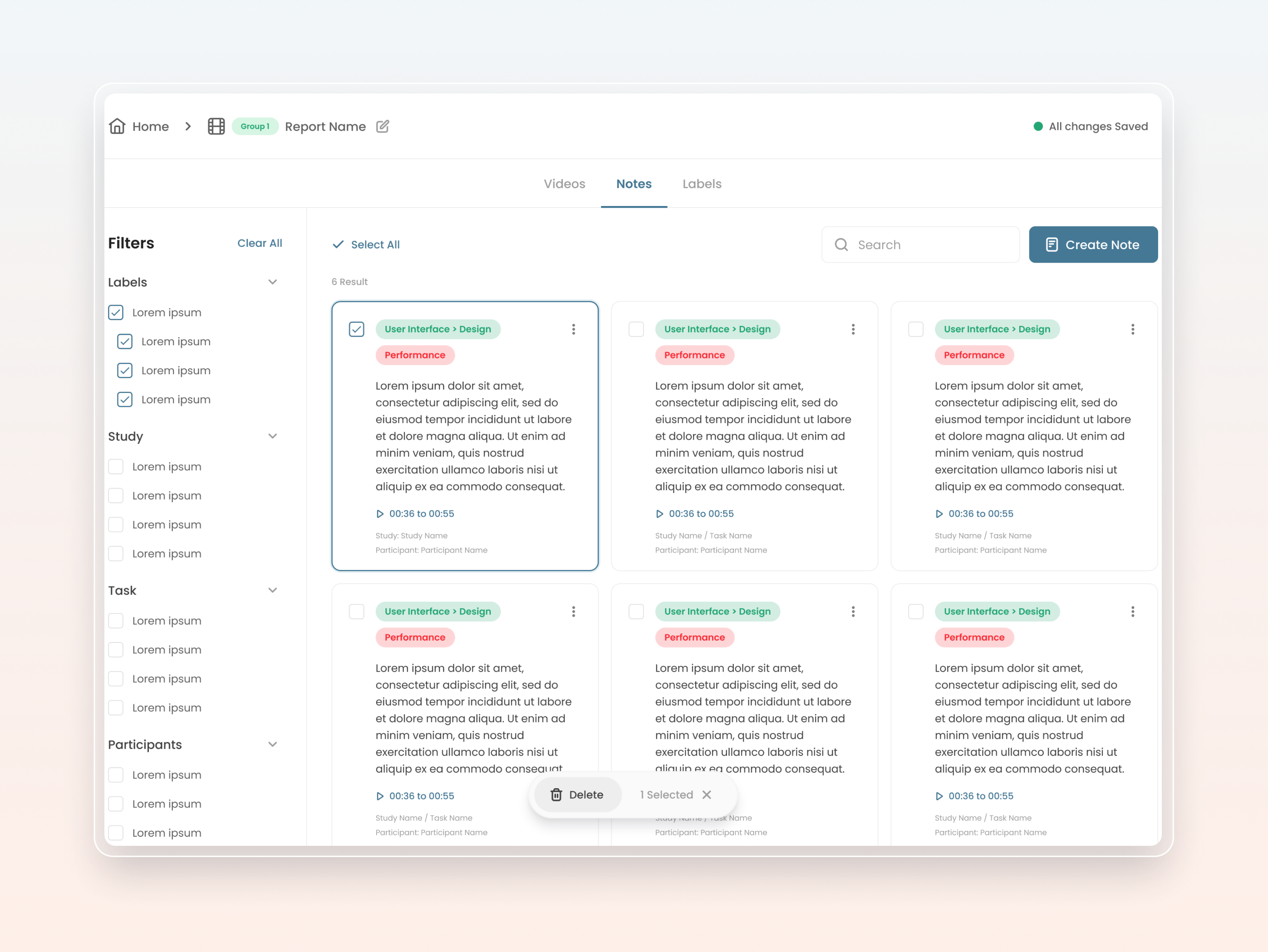
In-product surveys
Hubble offers a powerful in-product surveying feature for continuous user research, while UserTesting does not offer the capability to collect in-product research insights.
In-product research is a powerful feature because it allows teams to collect actual user feedback continuously across the product development cycle. Instead of solely relying on email-based participant recruitment or using external panels, teams can leverage in-product surveying to quickly launch studies, synthesize results and gather research insights from actual users of the product. In-product surveying is a powerful differentiation that provides Hubble users more versatility compared to other user research tools available in the market that don't offer an SDK.
User Segmentation & Targeting
Hubble's in-product SDK allows customers to track end-user events and attributes. Through the targeting, Using the track and identify calls included in the SDK, Hubble users can create segments and groups so that they can collect feedback, ask for participation and even opt people in for moderated interviews from a specific group of users as opposed to targeting all page visitors.
In order to expedite the installation and use of identify & track, Hubble also offers a Segment destination integration so that Segment users can quickly install Hubble and process events and attributes without having to manually install the SDK. UserTesting's in-product prompt does not offer the ability to target specific users based on attributes or events.
Advanced Controls for UX
Hubble offers various granular controls that maximize the quality of the end-user experience. With Hubble's in-product surveys, you can control the frequency, set a cadence and even add a delay to the surveys so that you can have full control on your product's user experience. UserTesting does not offer a native experience to launch in-product surveys and participant recruitment.
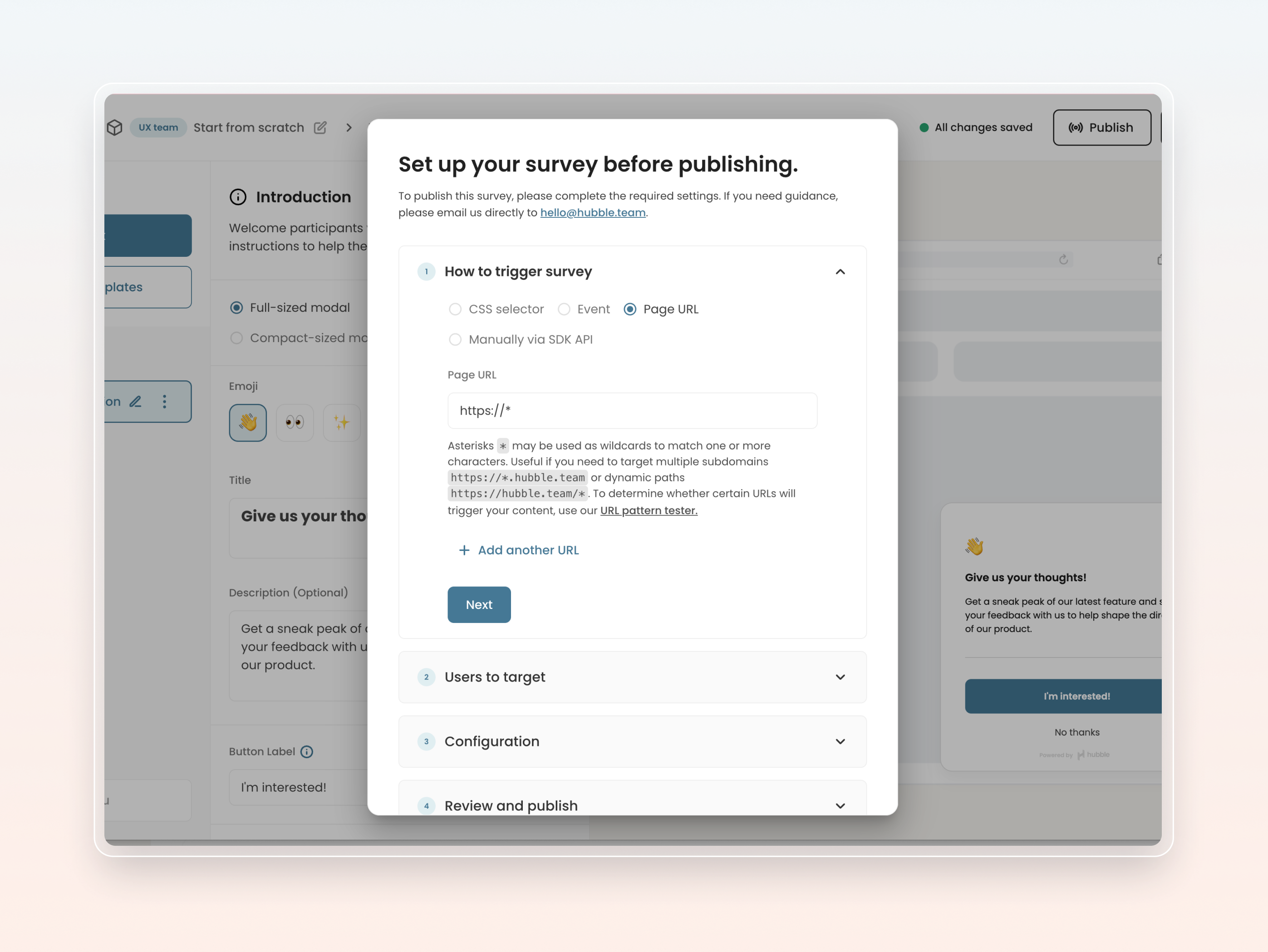
URL Targeting
Hubble's offers an intuitive URL builder that lets you build more complex but powerful URL targets that can include wildcards and dynamic URLs. It even provides a dynamic URL checker so that you can test whether a particular page is included or not in the URL builder. These details allow for Hubble customers to have much more control around the on page experience, making sure that they can target specific users on specific pages and routes
Research Participant pool quality
UserTesting offers a native pool of 2M participants from more than 100 countries to provide a broad panel of B2C testers to customers. In contrast, Hubble has taken a different, integration based approach to provide a participant research pool via API partnership with market leading user research panel providers such as Respondent and User Interviews.
Hubble offers 3 million participants from Respondent and 4 million participants from UserInterviews for all methodologies including unmoderated and moderated. Hubble customers get access to the two top-grade user research participant pools in the world across different countries, ethnicities, jobs and industries.
Many Hubble customers have been delighted with the fast turnaround and quality of the research participants that they can access through the platform, creating an easy way to get user feedback without having to recruit participants manually.

Factors to consider when choosing between UserTesting and Hubble
Now that we’ve outlined a detailed comparison between UserTesting and Hubble, it’s worth focusing on the most important factors to consider when choosing the right research platform. Selecting a tool that aligns with your needs ensures that your research delivers maximum impact, drives ROI, and supports continuous product improvement.
1. Test Types
World-class product teams need access to a wide range of research methodologies throughout the design and development process. UserTesting is a strong choice if your priority is collecting qualitative feedback, analyzing results, and sharing findings within a single platform. It’s best suited for individual, in-depth projects and primarily focused on qualitative research.
With UserTesting, you can:
- Collect responses through video recordings (though these can be time-consuming to script, schedule, and review).
- Recruit from a B2C-focused participant pool of about 1 million testers (many of whom may be unverified).
- Integrate with workflow tools like Slack, Trello, Jira, Outlook, and Google Calendar.
Hubble, by contrast, is built for teams that need flexibility across a broader set of research needs. It supports usability testing, prototype testing, card sorting, surveys, heatmaps, and in-product feedback. In addition, Hubble offers access to a much broader and higher-quality participant pool via its integrations with User Interviews and Respondent, the two leading research participant networks in the industry.
2. Ease of Setup
Ease of setup is critical when you’re moving fast and running multiple studies. Consider:
- How quickly you can launch studies and integrate with existing tools like Figma, Segment, or analytics platforms.
- Whether SDK support is available for in-product surveys and recruitment requests.
- The participant experience — intuitive tester UI/UX is key for high-quality feedback.
- The availability of pre-set templates that reduce the time required to set up and collect responses.
3. Integrations with Other Tools
Why choose Hubble over UserTesting?
UserTesting is primarily designed for gathering deep, qualitative insights through moderated interviews. However, customer feedback and G2 reviews note that it can take up to 10 weeks to receive usable insights, compared to Hubble’s much faster turnaround — often within hours.
While the UserZoom merger has expanded UserTesting into unmoderated testing, the platform still imposes restrictions on the types and number of studies you can run concurrently. This makes it difficult to scale research cost-effectively across larger organizations.
Hubble, on the other hand, provides a more comprehensive suite of capabilities, including in-product surveys, segmentation, and targeting — features that UserTesting does not offer. These capabilities make Hubble especially well-suited for teams seeking a single, versatile platform to support discovery and continuous product feedback.
Finally, Hubble’s participant pool is a major differentiator. UserTesting’s native panel offers around ~1 million participants. Hubble connects directly via API to User Interviews (4M+) and Respondent (3M+), giving customers access to 7 million+ vetted participants across 200+ countries. This approach ensures unmatched scale, quality, and diversity across industries, demographics, and roles.
In short: If you’re looking for a high-end, enterprise-grade research platform that combines speed, scale, and participant quality, Hubble is the stronger choice over UserTesting.
Conclusion
UserTesting and Hubble are both leading user research tools that can help product teams understand their users better. UserTesting is a leading provider of video-based research insights and has recently started to build out its unmoderated features as well as AI capabilities. If you are looking for a high caliber user research tool but want to have access to more complex in-product and unmoderated tests as well as a higher quality participant pool for all methodologies, Hubble is a better option than UserTesting.
If you are interested in finding other UX research tools available in the market, we recommend some of the articles below:
- To learn more about otherUserTesting alternatives, check out 13 best UserTesting alternatives.
- To read a comparison between Hubble and Maze please see Maze. vs Hubble
- To learn more about top UX research tools, please see the best user research tools in 2024.
- To see our curated list of survey tools, see the best survey tools for research in 2024.
FAQs
An alternative to UserTesting is any user research platform that allows you to run usability tests and collect insights from your customers. For example, you can use Hubble to run prototype tests using Figma and collect feedback from customers.
Here are twelve popular user research platforms that are similar to Maze:
- Hubble
- Maze
- UserZoom
- Lookback
- Lyssna
- Loop11
- Userbrain
- Userfeel
- Loop11
- Useberry
Schedule a demo with the Hubble team to understand how Hubble can help as a Maze alternative, and get insights on the other alternative tools as well.
Hubble and UserTesting are both leading user research platforms that offers tools to conduct usability tests and collect user feedback. While UserTesting offers website testing and prototype testing, Hubble also offers usability testing, prototype testing and a stronger advanced user targeting for user research insights from actual users and a 4 million+ participant pool that can be used to find any research persona you need.
Hubble's starter plan starts at $120 per month and both offer custom pricing for organizations. UserTesting plans start at $30K.
There are several user research plaforms that are similar to UserTesting, that can be used for different types of user research. One of the tools you can use is Hubble, which is an all-in-one tool that offers usability tests, prototype tests, participant recruitment and product surveys to continuously collect research insights from users in all stages of the product development process.


